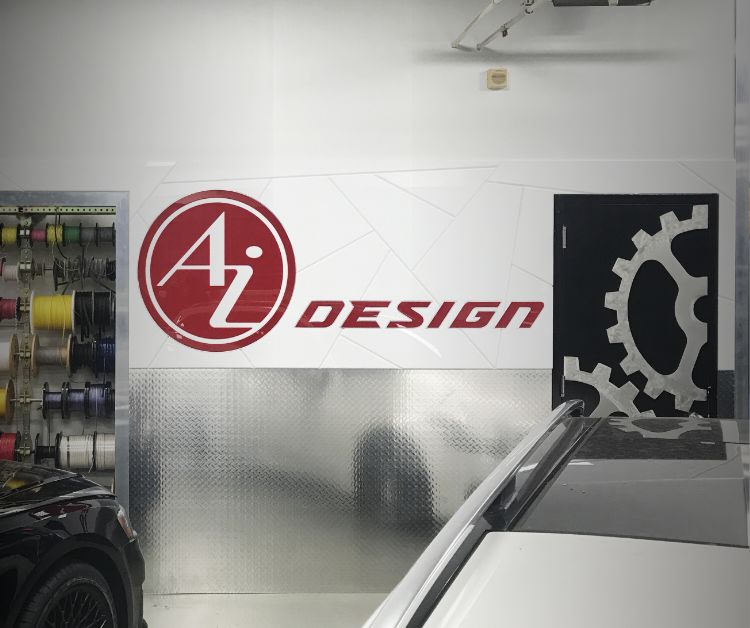Ai Design Blog
Provenance and originality: What they are and why they are at the very base of Ai Design’s own standard.
First off, what is provenance? It is essentially the history of the vehicle. Who owned it, where was it built, where was it located, etc. What made it special or significant after it left the factory? Adding to the provenance, does it have any motorsports history or celebrity ownership or historical significance? While we can’t create provenance, we can make sure the vehicle is not altered from that which makes it what it is. While modified vehicles are typically worth less than unmolested originals, a significant owner or renowned aftermarket firm may have modified the car in such a way that it actually improved the vehicle and increased the value.

(above: a rare Lexus LFA. Our client wanted some very specific modifications…but nothing that would damage the car, and could easily be removed if desired. The detail shows the new side skirts we designed and fabricated—housing underglow—which along with the one-off HRE 935 wheels, completely pisses off the purists.)
Originality on the other hand, tends to refer to the vehicle as it was originally built. Original parts, materials and craftsmanship. Maintaining the originality of a vehicle doesn’t only apply to vintage cars. From a 1969 Ferrari to a modern Maybach SUV or even an irreplaceable Audi Group B rally car piloted by one of the greats—any vehicle, if it is unchanged from a certain point in time—has originality. Whether that point in time is when the vehicle left the factory, or in the case of motorsports vehicles, when it achieved its greatest racing glory, maintaining that originality is unquestionably linked to maintaining the vehicle’s value.

Sometimes we have to correct mistakes and bad decisions that were made over time. For a recent complete restoration on a Porsche 959 Komfort, in addition to exterior bodywork and a full repaint, we needed to re-do the entire interior. Adding an additional level of difficulty was reversing the extensive clumsy modifications done at some point when a roll cage was installed. Parts are hard to find or impossible to come by on limited production cars like the 959. We needed to recreate some parts, using both 3D printing and hand fabrication as well as sourcing original leather and wool carpeting to replace the worn O.E. material. For this car, we were able to restore it, as close as possible, to originality.
(right: some of the worn and modified interior bits we needed to recreate for the 959, including in the foreground, the lower carpeted door panel that was fabricated to fit around the roll bar.)
Modifying a vehicle is easy. Maintaining its provenance and originality and value through the modification process is where our expertise comes into play. The detail is crucial. For most high-end automotive personalization studios and many restoration shops, there is a consistent style or repeated techniques that put a stamp on their work. You can look at a modified vehicle (and even some restorations), and easily recognize whose hands were on it.
We approach the process quite differently. For most of the work we do, whether it involves the restoration of a collectible vehicle, or improvements to a modern supercar, we strive to make our work invisible. By that we mean, the modifications, or restoration, or updates we execute, should blend so seamlessly that they appear to have been done at the factory. While the concept, functionality and scope of the work is a reflection of the owner, the execution is faithful to the specific marque. We match the materials, the shapes, the construction, even the hidden wire wrapping, to what the original manufacturer did. And when O.E. parts are not available—as in the case of rare and limited production vehicles—we make our own. The highest compliment we receive is when someone can’t see what we’ve done, because the work has been completely integrated into the original vehicle.
Our quality, our standard, is nothing short of the original factory effort. Our standard has always been based quite squarely on the vehicle manufacturer’s standard. When a vehicle with significant history—whether from motorsport exploits or just from a point of originality—is to be worked on, there is great risk in diminishing the provenance. Our goal is always at a minimum to maintain, and when possible enhance, the value of the vehicle.
We can’t put too much emphasis on that ethos, which we hold sacred. Our standard is to seamlessly match the quality of the manufacturer.
If you can detect our hand, we’ve failed. —Matt Figliola
(left: the restored Porsche 959 door panel, returned to its factory appearance, yet with upgraded speakers and crossovers.)




